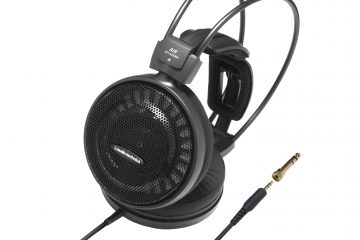One of my favorite things about steadily transitioning to a complete smart home setup is no longer having to carry keys. For example, my car, a Tesla Model 3, uses my phone as the authentication needed to unlock and drive the vehicle. Naturally, using a smart lock at home is also required to achieve pocket minimalism, and my favorite option is Schlage Sense.
The goal of adding microchips and internet connectivity to areas of the home that previously may not have even required electricity is simplicity. The Internet of Things means everything should work more efficiently with the addition of technology, and nothing truly smart should make you work more to operate it. The Schlage Sense smart lock does a great job of this by offering multiple options to enter a home, none of which include fumbling for keys.
Smart lock basics
Users are presented with two main options to unlock doors equipped with Schlage Sense, the backlit keypad that receives up to an 8-digit code, or their smartphone, using the Schlage app or their voice assistant. The former option is fairly seamless but has been included with locks many years before smartphones were mainstream. The latter option, however, is where our focus lies.
The Schlage Sense smart lock uses Bluetooth as the primary means of communicating with smartphones, which means that being in proximity (standard Bluetooth range is about 32 feet or 10 meters) is necessary for this option. There is a Wi-Fi adapter
For HomeKit, this means that your hub (iPad or HomePod) must be relatively near any doors using the Schlage Sense smart lock in order to receive an optimal experience. Of course, your smartphone can directly connect to the deadbolt via Bluetooth, but I’ve found that to be relatively unreliable, with it sometimes being faster to simply punch in the keycode rather than wait for my phone to connect to the lock and Siri to fire off the HomeKit command.
There’s always the Schlage app as an option for controlling the lock, but, for me, that crosses back into a similar or greater level of inconvenience as fumbling for physical keys to unlock the door, so either Siri has to work reliably or the keycode gets entered. That means you probably want a HomeKit hub to be within
Smart lock setup
Regardless of your smart home platform, initial setup is done via the Schlage app, which allows for a fair amount of customization. Various key codes (4-8 digits) can be set and assigned to different members of the house for accessing the smart lock, so the administrator can view who unlocked the door and at what time, based on the individual codes. Further, key codes can be disabled and enabled depending on time-of-day, allowing a house cleaner or other service individual to access the home only when permitted, and a log of all entries is kept for owners to view.
Additionally, other users can download the Schlage app and be invited by the owner to use the app to gain access. The variety of options and customization Schlage provides for controlling and fine-tuning smart lock access are both welcomed and necessary for providing a simpler, more efficient method of entering and securing your home than merely a set of physical keys that are arguably more easily lost or stolen.
Unfortunately, Schlage doesn’t speak much to the security of the software in use, but since it conforms to the standards of the connected home platforms it supports, that’s where much of the security lies. HomeKit, my solution of choice, uses encrypted communication over Bluetooth, which is well-documented and maintained by Apple and their security team. Apple’s focus on privacy and security personally instills more confidence than a marketing bullet point would for me, personally.
The lock itself does have a piercing alarm that goes off when a code is entered incorrectly a number of times, as well as well a forced entry is detected. The alarm tone is startling and almost painfully loud, so there’s little chance anyone in the house won’t be alerted by it.
Finally, Schlage offers a couple of different designs and finishes for the lock and its handle that should complement a variety of door styles, including modern and traditional, fairly well. My aged bronze deadbolt with Camelot trim looks great on the front door, and I personally like the Century trim with a more modern style quite well. The lock is powered by four AA batteries and runs for quite a while on the included set, so you shouldn’t have to worry about changing batteries for a while, and it will alert you when the need arises.
Conclusion
Overall, Schlage Sense is a great choice for homeowners looking to add more smart home accessories, improve automation, or simply go keyless. Entry customization is diverse, allowing for exact control of who may enter and a log of when they did. HomeKit support is solid, provided you have a hub within Bluetooth range, and every major smart home platform is supported. If you’re in the market for a smart lock, the Schlage Sense smart lock receives my approval. Thank you to Schlage for sending over a complimentary unit for review.
As an Amazon Affiliate, we earn on qualifying purchases.
As an affiliate, we earn commissions from qualifying purchases using our links or coupon codes.



